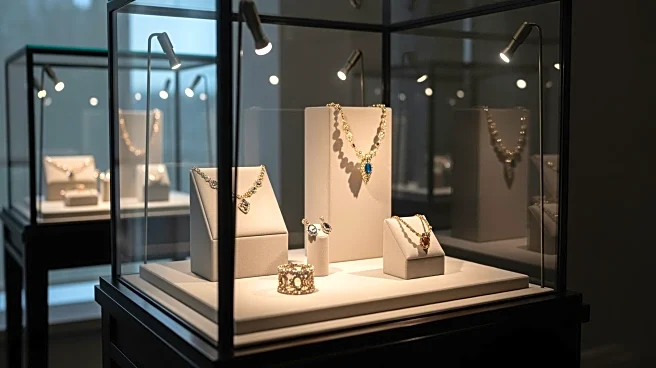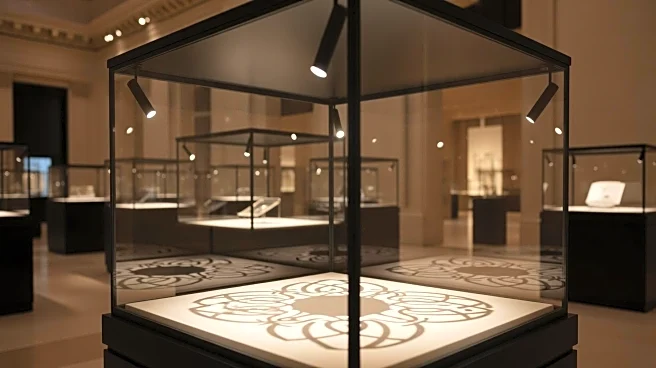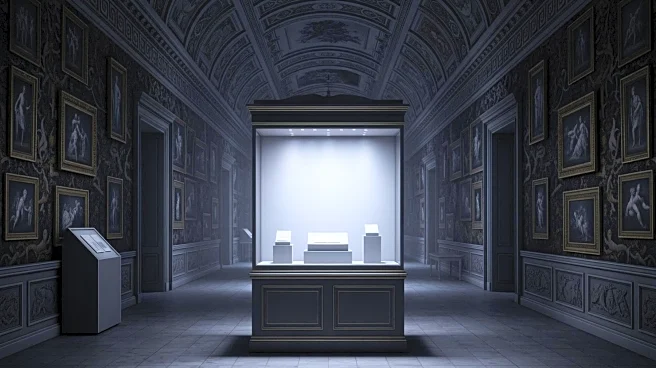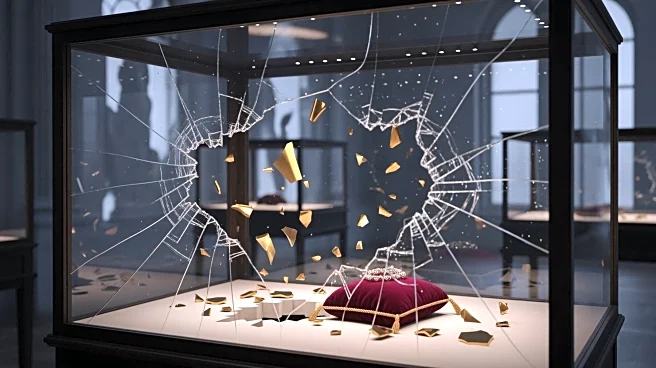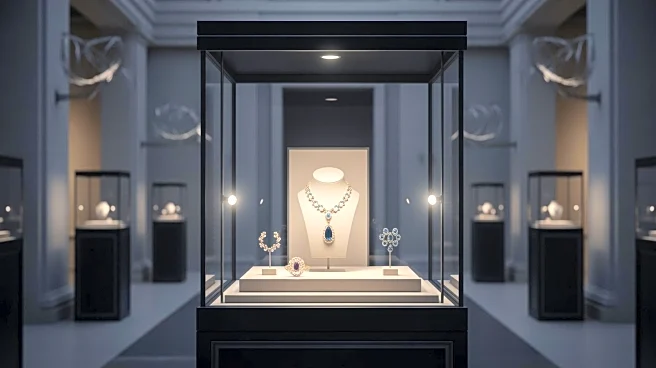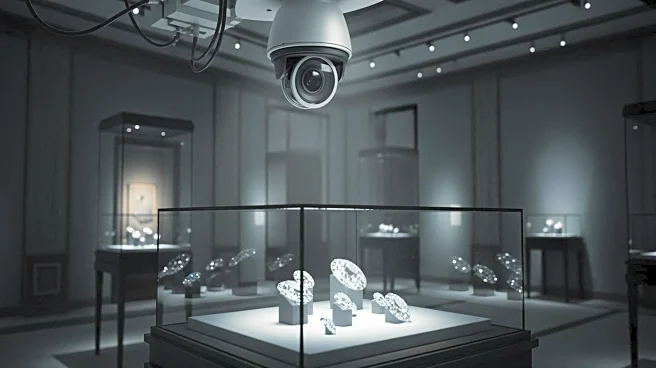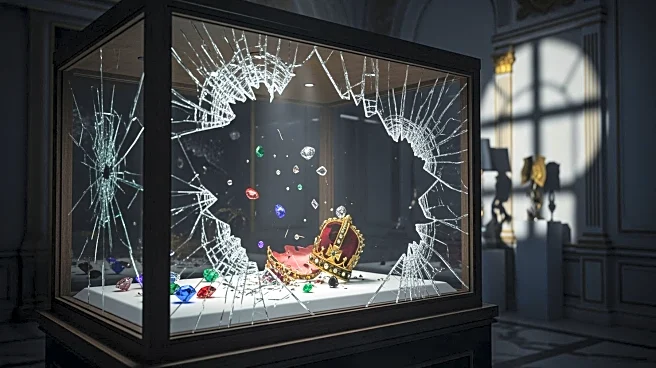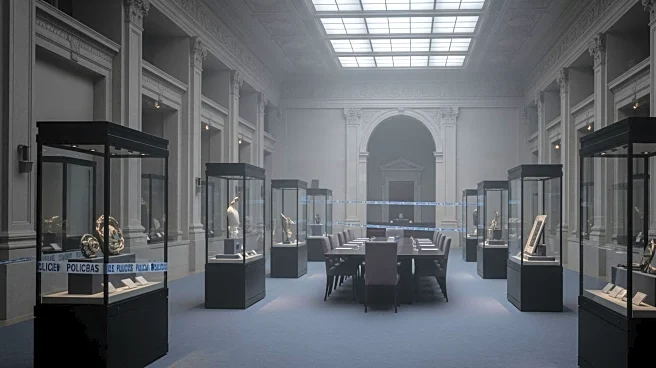What's Happening?
In a brazen daylight heist, thieves stole priceless Napoleonic jewels from the Louvre Museum in Paris. The theft occurred shortly after the museum opened, with the perpetrators using a basket lift to access the building's facade, forcing a window, and
smashing display cases. The stolen items include a sapphire diadem, necklace, and earrings linked to 19th-century French royalty, as well as an emerald necklace and earrings from Empress Marie-Louise's collection. The heist has raised concerns about security at the museum, which has been criticized for understaffing and overcrowding. The Louvre was closed for the rest of the day as police conducted a forensic investigation.
Why It's Important?
This high-profile theft underscores significant security vulnerabilities at one of the world's most visited museums. The incident highlights the challenges faced by cultural institutions in balancing public access with the protection of invaluable artifacts. The theft could prompt a reevaluation of security measures at museums globally, especially those housing items of significant historical and cultural value. Additionally, the heist has political implications, as it has been used to criticize the French government's handling of cultural heritage protection. The loss of these jewels represents not only a cultural blow but also a potential financial loss, as such items are often irreplaceable.
What's Next?
Authorities are conducting a thorough investigation to recover the stolen jewels and prevent future incidents. The Louvre plans to enhance its security measures, including upgrading surveillance systems and increasing staff. The museum's management may also face pressure to address staffing and crowd management issues to ensure better protection of its collections. The incident could lead to broader discussions on the security of cultural institutions and the need for international cooperation in recovering stolen artifacts.
